10 merle dog breeds with dappled coats
Featuring unique mottled patterns and distinctive eyes, these merle dog breeds are sure to make you look twice
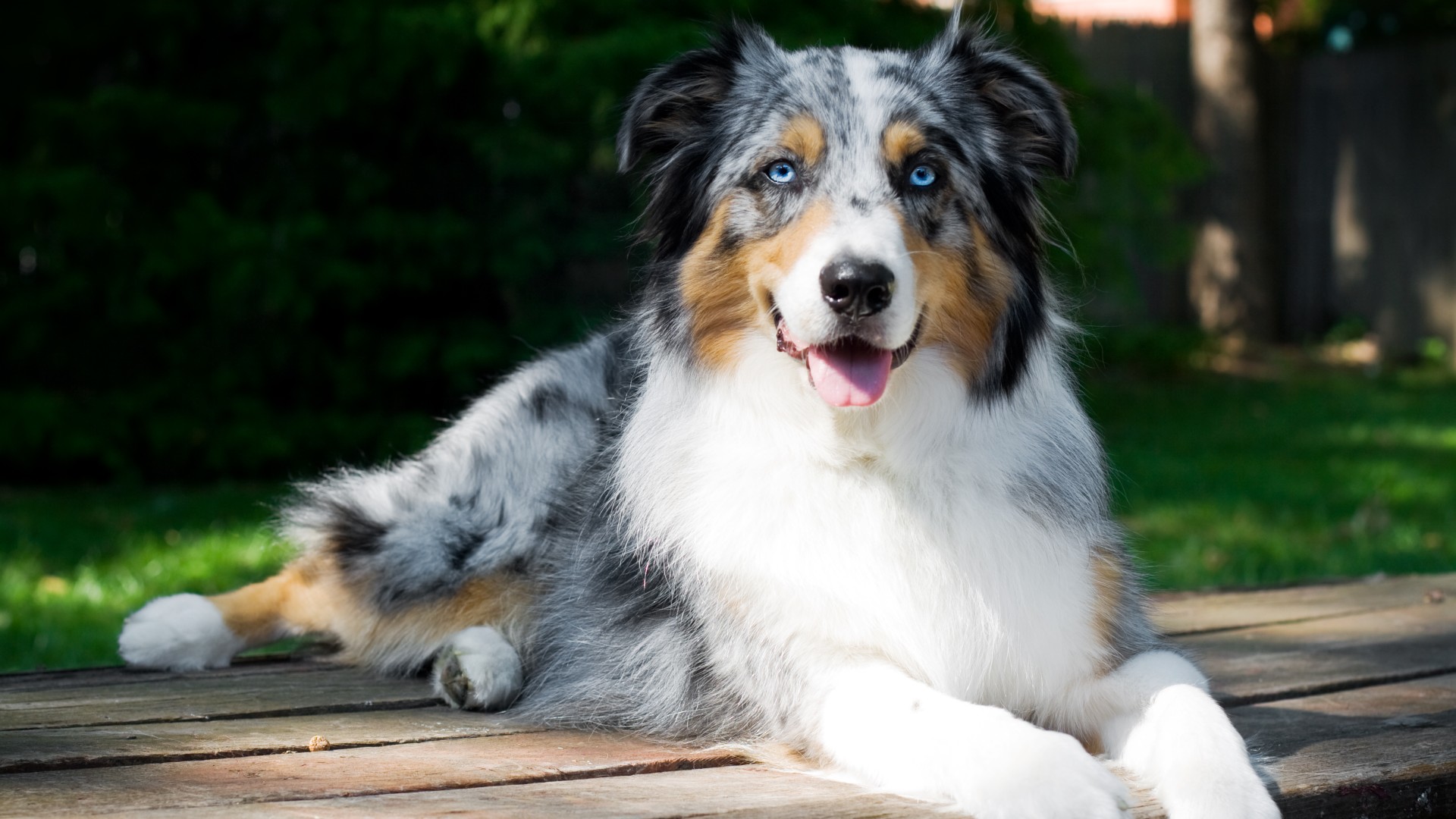
Like us humans, dogs too have multiple distinguishable features that make them truly unique. Merle dog breeds are canines that predominately show the merle coat pattern, a scattering of mottled patches that appear on their coat, typically in spots of red (liver merle) or black or gray (blue merle) colorings.
This is caused by genetics: if a dog inherits a dominant and a recessive copy of the same gene from its parents, then it will have a standard merle coat (Mm) but you may have also heard about a double merle coat in a dog (MM). This can happen if a dog inherits two dominant copies resulting in a coat, that despite what its name suggests, actually has less patches of merle but is largely considered irresponsible by breeders who look to breed not just for aesthetic purposes but for betterment of the dog.
A further defining characteristic of a merle dog is that they may have odd-colored eyes, such as one blue and one brown. A prime example of this would be the loving and loyal Australian Shepherd who not only features the typical merle markings to his coat, but can often be seen with one color eye different than the other.
Merle shouldn't be confused with the markings seen on brindle dog breeds, which are typically tiger-like stripes across the coat but it is a trait that is also inherited by genes from the parents.
Let’s take a closer look at 10 of the most popular merle dog breeds out there, each with their own individual quirks.
Popular merle dog breeds
1. Border Collie
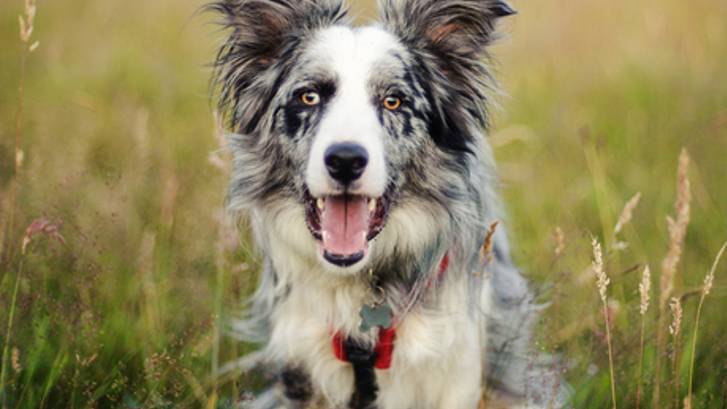
When you picture the handsome Border Collie, it's likely you think of their trademark black and white coat. Typically, Collies are largely black in color with a white chest, snout and legs but they can also feature a merle coat, giving them a similar appearance but not to be confused with the Australian Shepherd.
Border Collies actually come in shades of blue, red, and sable, but the merle pattern is the least common of all the coat traits. Here are some more facts about Border Collies.
2. Great Dane
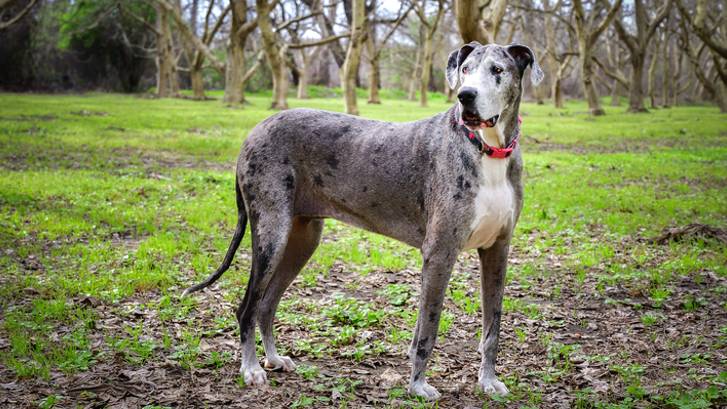
Standing as tall as 32 inches at the shoulders, the gentle Great Dane is majestic in appearance thanks to its taller than average height. Many dog lovers will think of a Great Dane's coat as being black, blue, or fawn but the merle pattern is typically a pale to dark grey coat, covered in darker splotches. It's rare to see a white Great Dane, as this is created when a Great Dane puppy possesses two merle genes.
Here are some more Great Dane facts.
3. Australian Shepherd
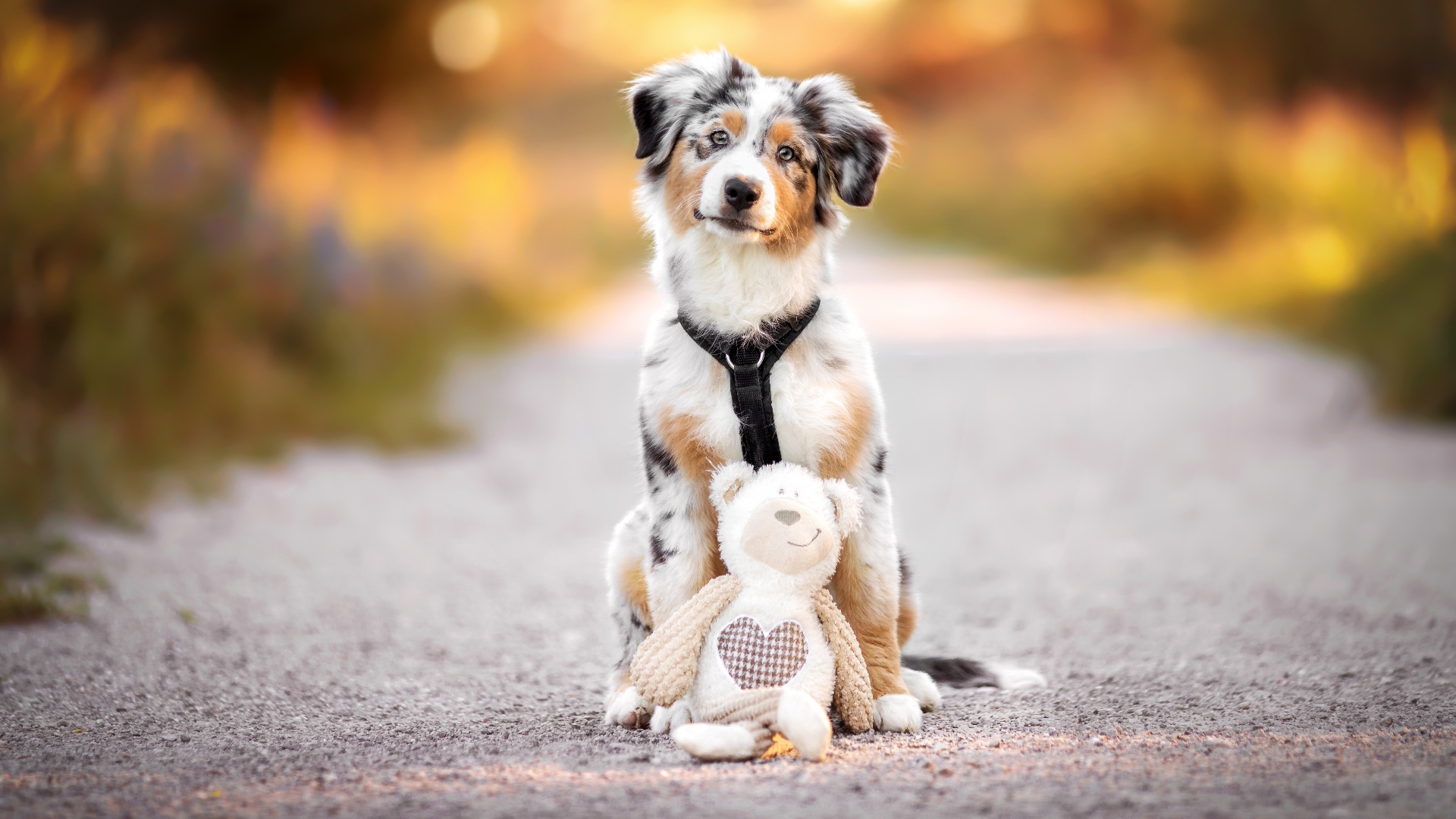
Did you know that at least 40% of all Aussies are merle? So, how do you tell the difference between a merle and a non-merle Aussie?
While Australian Shepherds also come in red, white, black, and tan colors, a merle coat features dark blotches against a light coat. The blue merle dog has black patches on gray, while the red merle dog has red patches on beige.
4. Dachshund
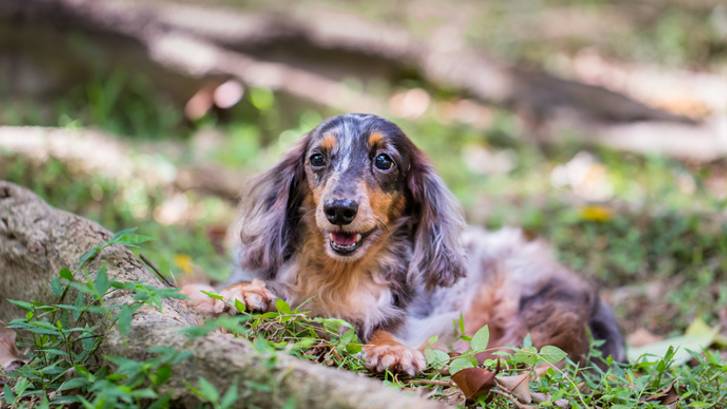
The sweet-natured dachshund can have a long, a short or a wire-haired coat, with black and tan being the most common coat color. There is, however, the dapple dachshund, which is another way of saying merle in the world of sausage dogs. It's not seen very often but it can occur across all three of the coat types.
5. Catahoula Leopard Dog
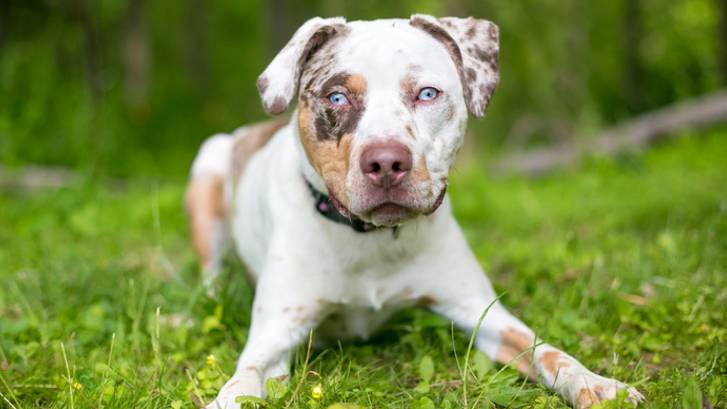
Another breed frequently cited as a prime example of merle is the Catahoula Leopard Dog, a lesser known American dog breed named after Catahoula Parish in Louisiana. Like his name suggests, this breed tends to feature a leopard-like coat which is caused by, you guessed it, the merle gene.
The breed does come in solid colors too, while the merle coat does not typically cover the entirety of the Catahoula's body but only in certain areas.
6. French Bulldog
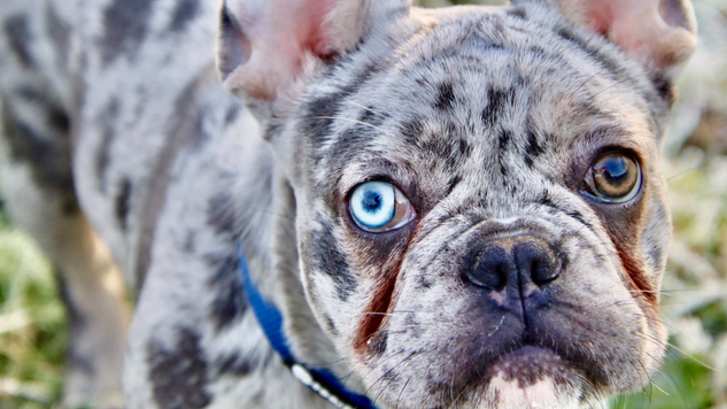
Have you ever seen a merle French Bulldog? No? That may be explained by the fact that these guys are pretty rare. While most Frenchies are brindle, white, fawn or tan-colored, the blue merle French Bulldog is the most uncommon color of all in the breed group. Here are some more fascinating French Bulldog facts.
7. English Bulldog

It's rare to see a merle English Bulldog but they do exist. There's actually three types of merle type in this breed: a dilute merle which is essentially a blue merle, just without any dark gray, a cryptic merle that can carry the merle gene but that look classic in appearance and merlequins who have patches of merle on a typically classic-colored coat.
8. Chihuahua
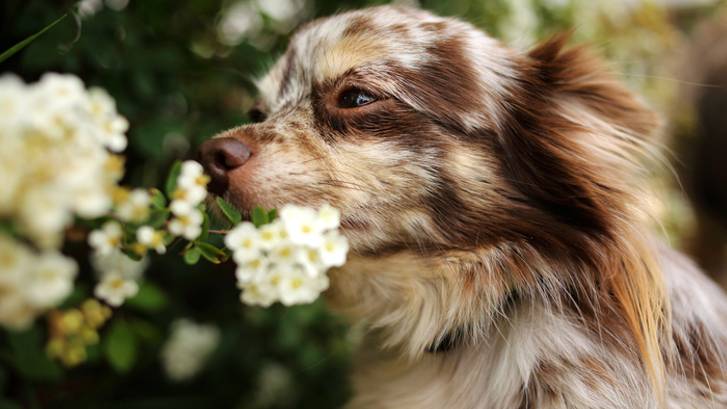
You might think that a merle Chihuahua is the rarest color of all in this dog breed group, but arguably it's actually white caused by a lack of pigmentation. Merle versions of this breed are, however, generally popularized as a 'rare' designer color which causes controversy amongst breeders who believe in developing good health and positive attributes in their dogs over purely aesthetic colorings for the sake of money. Here are some more Chihuahua facts.
9. Cardigan Welsh Corgi
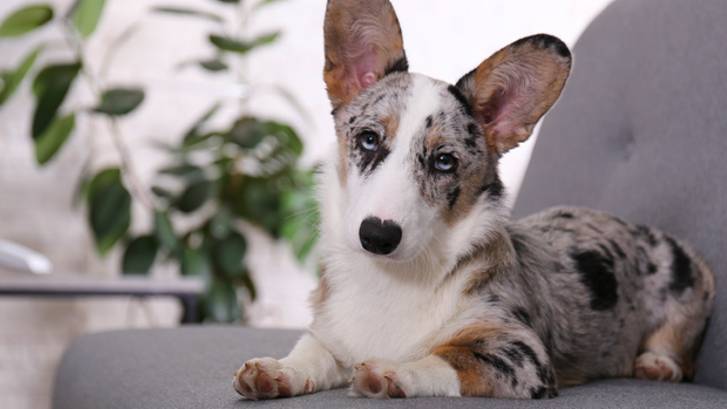
The merle pattern is only found in the Cardigan Welsh Corgi, typically not in the Pembroke breed. A merle Cardigan Welsh Corgi can be several colors such as sable, brindle, black, gray, or red but blue is generally regarded as the predominant color that classifies this breed.
10. Koolie
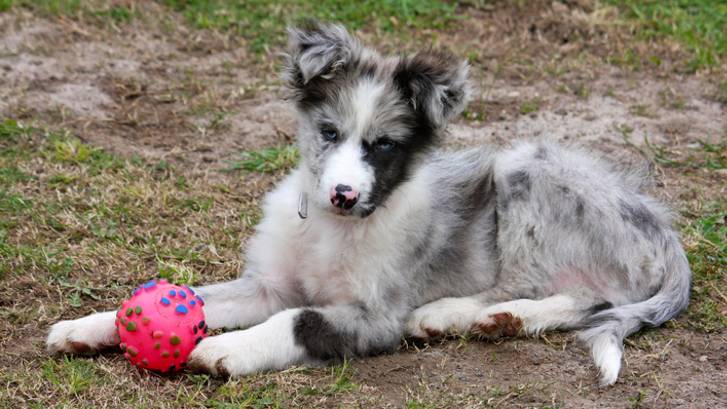
Australian cattle dog breed the Koolie can feature both solid and merle colorings. The breed comes in a wide variety of colors including black, red, chocolate, cream, fawn and lilac, with the merle variety featuring large splashes of darker colorings that are usually red and chocolate for red merles or black and grey for blue merles.
Breeding two Merle dogs runs a high risk creating sight and hearing defects in the offspring.
PetsRadar Newsletter
Get the best advice, tips and top tech for your beloved Pets

Ashleigh is Digital Editor on PetsRadar. With over 8 years of experience in print and digital media, she has acted as an editorial lead on a variety of projects, with animal themes a keen interest. As an avid animal lover, you can often find Ashleigh checking out the newest trends in animal care or looking at cute cat videos on TikTok.
